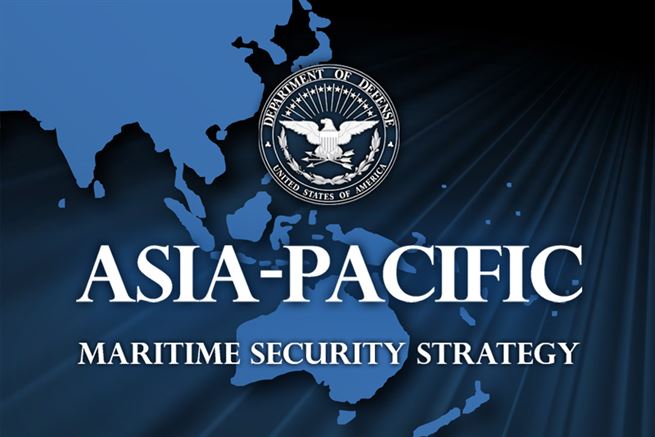The U.S. needs to get serious about confronting China over its construction of phony islands and attempts at regional dominance
08/31/2015 / By usafeaturesmedia

(NationalSecurity.news) In recent months, there has been increased tension in the South China Sea as Beijing continues to construct artificial islands that it has taken to calling “sovereign” territory.
As Chinese construction proceeded, a loose alliance of Asian nations – the Philippines, Vietnam, Indonesia, Thailand and Malaysia, to name a few – vocally opposed Beijing’s efforts, but to little avail. China, clearly the biggest kid on the block, was unfazed by the angst of its smaller, less powerful neighbors.
So the island-building continued. And though construction may now be coming to an end at least for the time being, the Chinese military nevertheless continues to “fortify” its positions on these made-from-scratch islands, all while claiming that the Chinese government has a right to do all of this because it has sovereignty over the entire region.
This is upsetting to local powers for a number of reasons.
First, China’s claims that it owns the region includes stewardship over the Spratly Islands, which, according to the Council on Foreign Relations, “is home to a wealth of natural resources, fisheries, trade routes, and military bases, all of which are at stake in the increasingly frequent diplomatic standoffs.”
The CFR further notes:
The South China Sea comprises a stretch of roughly 1.4 million square miles in the Pacific Ocean that encompasses an area from the Singapore and Malacca Straits to the Strait of Taiwan, spanning west of the Philippines, north of Indonesia, and east of Vietnam. The South China Sea islands number in the hundreds, although the largest and most contentious territories include the Spratly Islands, Paracel Islands, Pratas Islands, Macclesfield Bank, and Scarborough Shoal, to which all of the six major Southeast Asian nations lay various claims.
Second, the claim of blanket sovereignty runs counter to traditional maritime boundaries off coastlines, like the Exclusive Economic Zone (EEZ) which, as outlined in the United Nations Law of the Sea Treaty, only extends 200 nautical miles from coastlines. Given the proximity of many Asian nations, actually defining such zones is difficult, given that some no doubt overlap. But in China’s case, its claims are tenuous at best, given the geography of the region. The other nations have much more credible claims of sovereignty.
As noted in an August report[PDF] from the Congressional Research Service, some observers have characterized “China’s approach for asserting and defending its territorial claims in the ECS and SCS as a ‘salami-slicing’ strategy that employs a series of incremental actions, none of which by itself is a casus belli, to gradually change the status quo in China’s favor.”
But the United States views the region as largely international water and has said that China’s construction of artificial islands does not suddenly give it an EEZ to include the Spratlys and other island chains.
Yet, what is the Obama Administration truly prepared to do to back up its position and ensure that the region remains open to all and, most importantly, conflict-free?
Jerry Hendrix, director of the Defense Strategies and Assessments Program at the Center for a New American Security, believes the administration ought to take a more confrontational tone with China, noting that Beijing is using a bogus maritime “map” to assert its claims.
“Lets start with some facts,” he wrote in an article for Defense One. “China’s territorial claims, based upon a 1947 map showing nine dashed lines encircling the South China Sea, has no legitimate basis in fact. China has never been a seagoing nation.”
He added that China’s claim that it seeks only access to natural and food resources is also dishonest.
“It is becoming increasingly clear why China desires to establish its hold over the islands and water in question,” said Hendrix. “Despite arguments about energy and food supplies that may lay in abundance below the waters of the South China Sea, Beijing’s actions make increasingly clear that it seeks control for its own military advantage and to establish dominance over the other nations in the region.”
Hendrix believes that the Obama Administration should send a strong and defiant signal to China in the vein of sending a pair of B-52 bombers in 2013 to “violate” “sovereign” air space claimed by China in the East China Sea that is also claimed by Japan.
The administration “should immediately dispatch an American warship, perhaps one of our advanced Aegis destroyers, to pass within 12 nautical miles of one or all of China’s man-made islands to demonstrate in an unambiguous fashion that they are not now, nor ever will be, sovereign Chinese territory,” Hendrix wrote. “These destroyers are well armed, have excellent sea keeping abilities, and are capable of ‘shouldering’ vessels that attempt to ram or force them to change course. The U.S. Navy should come ready to ‘get up in their grill.’”
In fact, that may be what is about to happen.
According to Defense One, as part of the Defense Department’s “pivot” to Asia, the U.S. plans to deploy some of its most modern, capable weapons to the region in the coming months and years. That will include deployment of the F-35 fighter and the Navy’s newest warships. In addition, according to a just-released mandatory Pentagon report to Congress regarding U.S. maritime strategy,[PDF] the Navy will continue to ignore China’s claims of sovereignty over its man-made islands.
“Recognizing the importance of the Asia-Pacific region and its maritime domain for the security of the United States, the Department is focused on safeguarding freedom of the seas, deterring conflict and coercion, and promoting adherence to international law and standards,” the document notes. “As it does around the world, the Department will continue to fly, sail, and operate wherever international law allows, in support of these goals and in order to preserve the peace and security the Asia-Pacific region has enjoyed for the past 70 years.”
There is no question that China is a rising power – and a power that the United States and its allies in the region should never underestimate. That said, it is increasingly obvious that Beijing will continue to press ahead with plans to dominate the East and South China Seas until or unless a greater power checks that dominance.
That greater power can only be the United States and its allies.
See also:
Admin.GovExec.com[PDF]
Tagged Under:




















